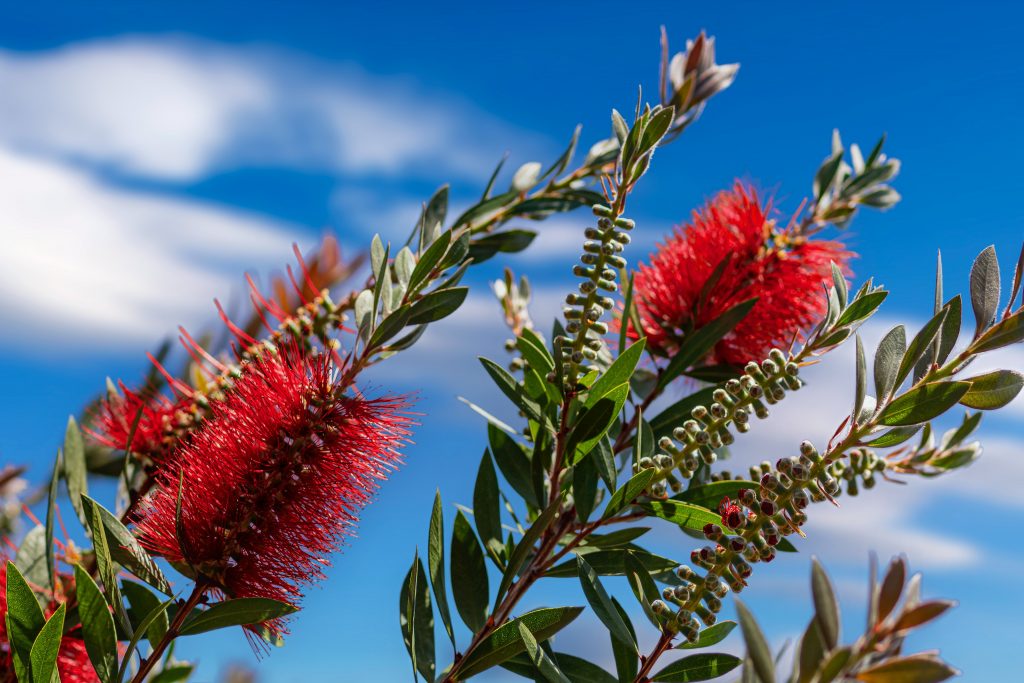Table of Contents
Callistemon ‘Splendens’;is an evergreen shrub that belongs to the family Myrtaceae. It is commonly known as Splendid Bottlebrush and is native to Australia. The plant can grow up to 4 to 8 meters tall and 2.5 to 4 meters wide, with a dense growth habit.
The leaves are lance-shaped and about 3 to 5 cm long. The flowers are arranged in cylindrical spikes that resemble a bottle brush. The flowers are bright red and appear in late spring to early summer. The plant is drought-tolerant and prefers well-drained soil in a sunny location.
Callistemon ‘Splendens’ is popular as a garden plant due to its striking appearance, low maintenance, and ability to attract birds. It is commonly used in landscaping and as a hedge or border plant. Overall, it is a beautiful and easy-to-care plant that can add colour and texture to your garden.
Environmental Requirements of Callistemon Splendens
Proper plant care is essential for the health and longevity of plants. It ensures that they grow to their fullest potential and maintain their vibrant colours, foliage, and blooms. Proper care includes providing the plant with the necessary environmental requirements such as sunlight, water, temperature, and soil.
1. Sunlight

Callistemon ‘Splendens’ requires plenty of direct sunlight to grow and thrive. Ideally, it should receive at least 6 hours of direct sunlight per day. However, it can tolerate some shade, especially during the hottest part of the day.
2. Temperature
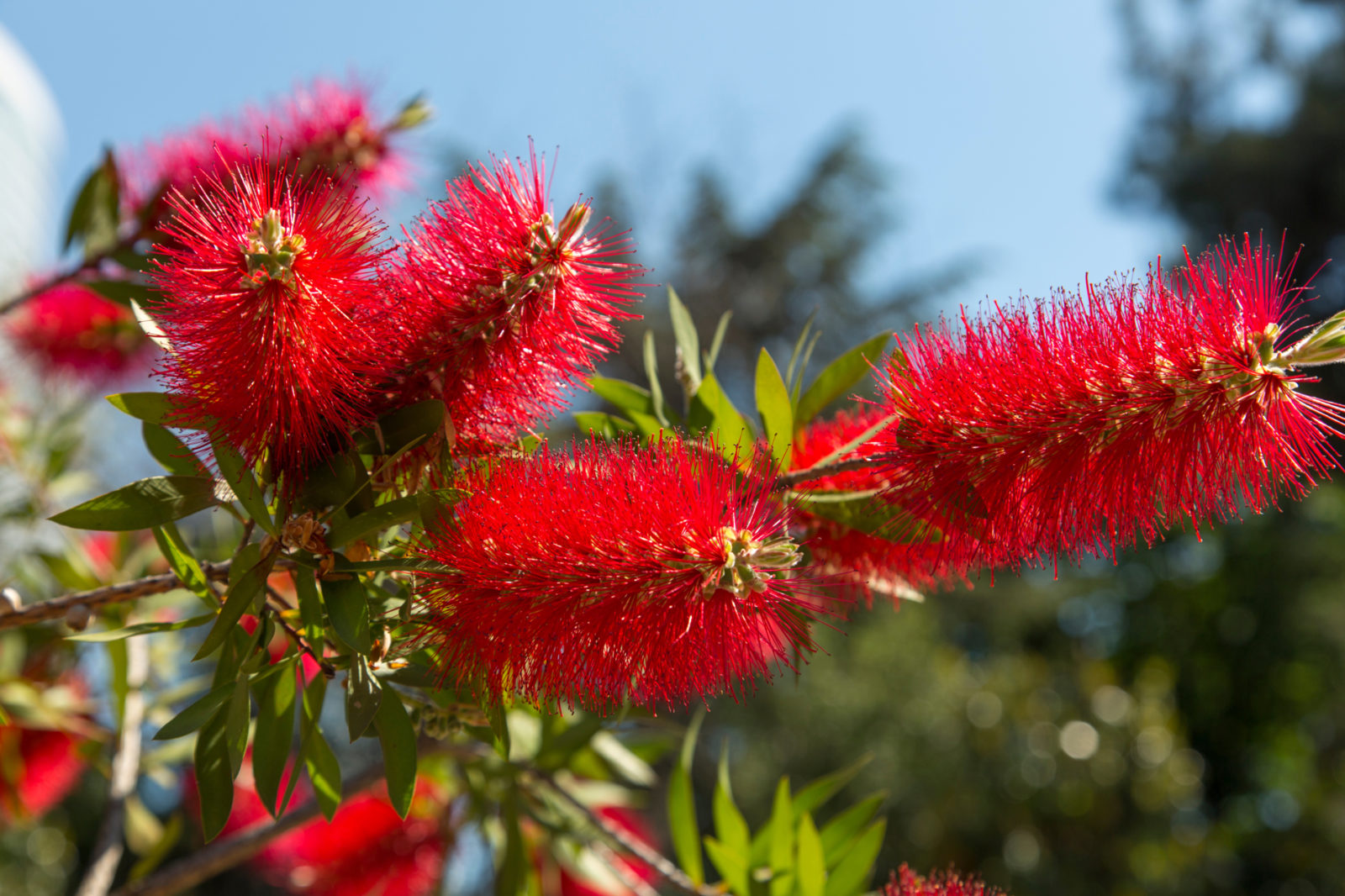
Callistemon ‘Splendens’ grows best in temperatures between 10℃ to 32 ℃. This range provides the ideal conditions for the plant to grow vigorously and produce abundant flowers. However, it can even endure freezing temperatures for a short period of time.
3. Water
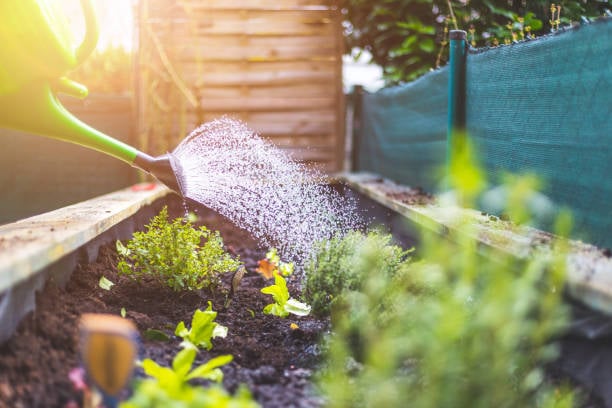
Callistemon ‘Splendens’ prefers consistently moist, well-draining soil. During its growth period, it requires moderate watering. Once the plant is fully-grown, it does not require much amount of water and can even survive droughts.
4. Soil

Callistemon needs well-drained soil containing sand, clay, and loam. The soil should have a pH ranging from acidic to neutral. If the soil is alkaline, its pH level is increased to acidic by adding sulfur.
Callistemon Splendens Plant Care Techniques
Callistemon ‘Splendens’ requires minimal maintenance. It thrives in full sun and well-drained soil, and it is drought-tolerant once established. Regular watering during the growing season and fertilizing once or twice a year with a slow-release fertilizer will encourage healthy growth and blooming. Pruning after flowering will promote bushier growth and keep the plant looking tidy. Additionally, it is important to keep an eye out for any pests or diseases and treat them promptly if detected.
1. Pruning
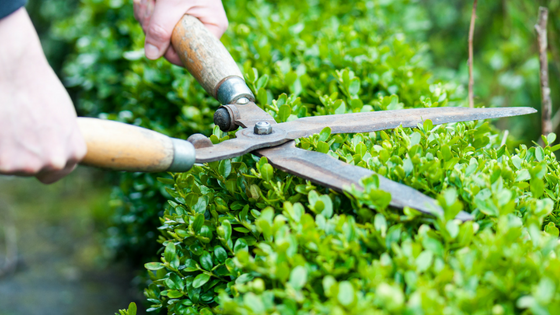
The best time to prune Callistemon is immediately after flowering, which is late spring or early summer. One must ensure that the plant should not be damaged during the pruning. Tools like sharp, clean pruning shears or loppers are recommended for pruning. Throughout the growing season, you may also need to perform maintenance pruning to remove any diseased or damaged branches, as well as any growth that is out of bounds.
2.;Fertilizing
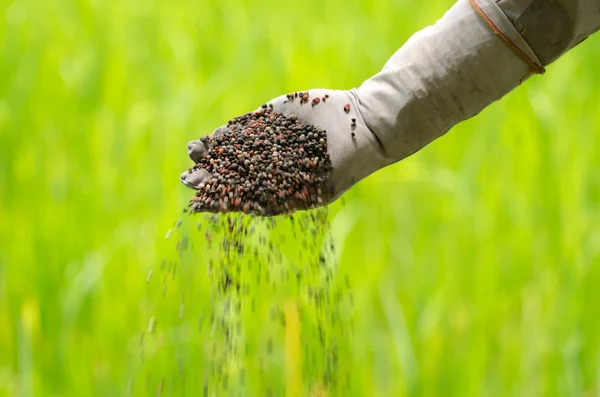
Fertilize your Callistemon ‘Splendens’ in spring or early summer when the plant is actively growing. Use a;balanced, slow-release fertilizer;that contains equal parts of nitrogen, phosphorus, and potassium. You can also use a fertilizer specifically formulated for flowering plants, which will provide extra phosphorus to encourage blooming.;The pH of the soil should be between 6 to 8.
- Organic fertilizer for all types of outdoor and indoor plants
- Fertilizer for all types of plant-based plants developed to provide all the nutrition of plants
- Plant growth and flowering stimulator
3.;Pests and Disease Control
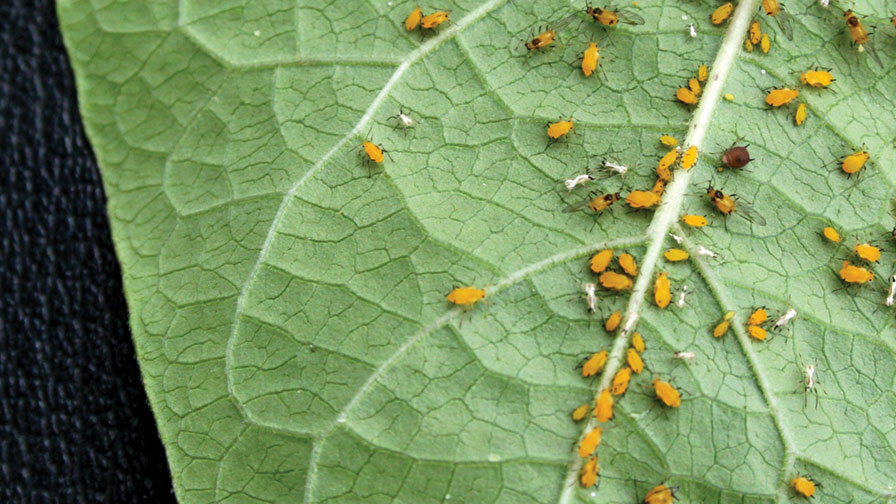
Like all plants, Callistemon can be susceptible to a range of pests and diseases. Some of the pests are Aphids, Spider mites, and Sacle insects. These pests can be controlled by applying methods like spraying a strong stream of water, applying neem oil, and using insecticidal soap.;Common diseases affecting Callistemon are root rot, leaf spot, and powdery mildew. Preventive steps like ensuring the soil is well-drained, removing infected leaves, and spraying the plant with a fungicide are helpful.
Common Mistakes to Avoid
Callistemon ‘Splendens’ is a strong plant and require minimal care. However, there are some common mistakes that need to be avoided when taking care of this plant.
1. Over and Underwatering
Callistemon ‘Splendens’ prefers well-draining soil, and overwatering can lead to root rot. Water the plant only when the soil feels dry to the touch. On the other hand, it also needs consistent moisture to thrive. Make sure the plant is not drying out between watering.
2. Pruning at The Wrong Time
Pruning can help promote bushier growth and more flowers, but it’s important to prune at the right time, i.e., spring or early summer. If you prune too early or too late, you may remove next season’s flowers.
3. Over Fertilizing
Callistemon requires minimal fertilization, and over-fertilizing can cause damage to them. Damages caused by over-fertilization are burned roots, weak growth, and environmental pollution. Fertilize once a year in early spring with a balanced fertilizer.
4. Planting in The Wrong Location
This plant prefers full sun, but it can also tolerate some shade. Some of the problems caused by planting it in the wrong location are insufficient sunlight, poor drainage, and exposure to frost. Make sure to plant it in a spot with well-draining soil and good air circulation.
Callistemon ‘Splendens’ Plant – Indoor vs Outdoor Care
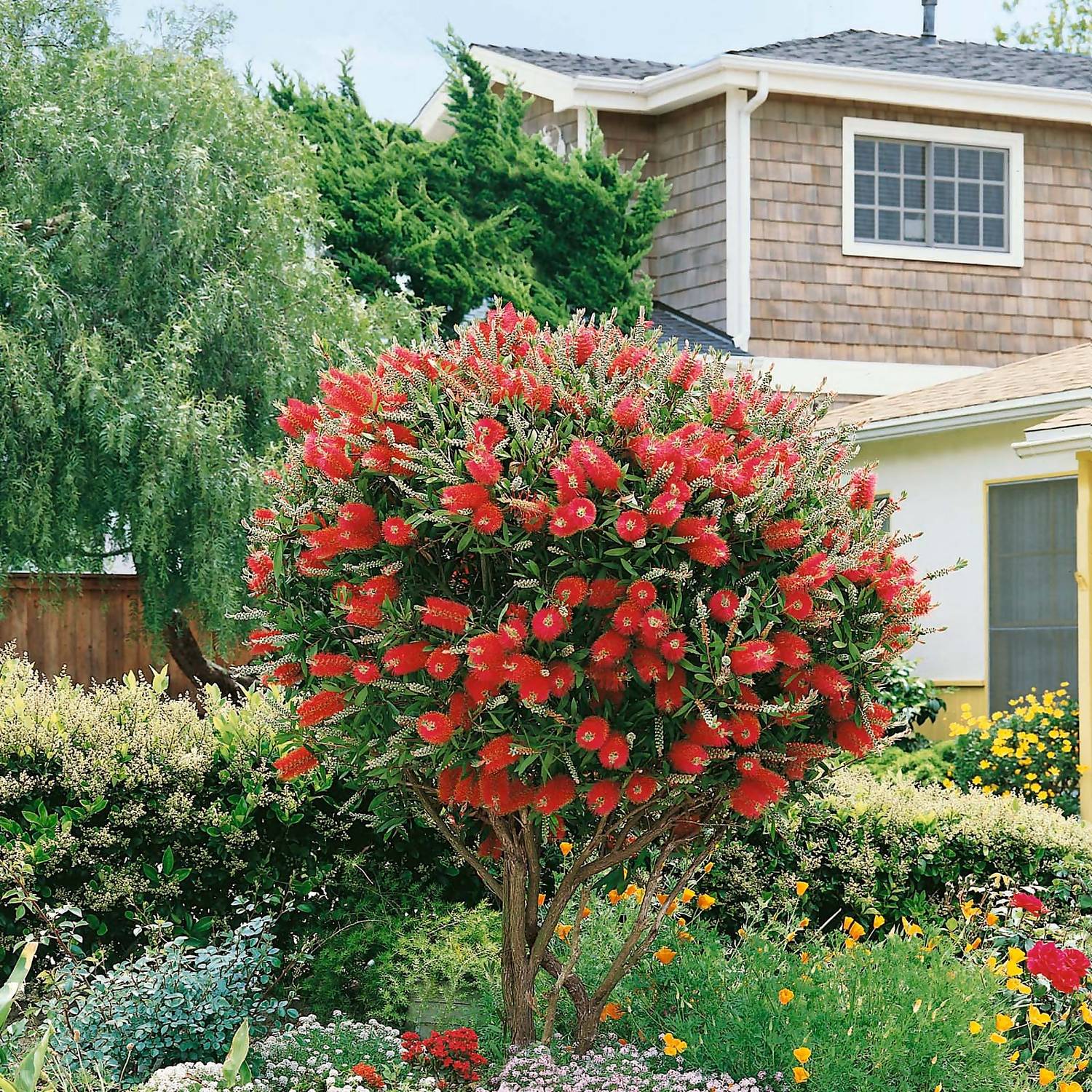
In terms of indoor vs outdoor care for Callistemon ‘Splendens’, it is important to note that this plant is primarily an outdoor plant and does best in full sun or partial shade. However, it can be grown indoors as a houseplant if given the right conditions.
|
Indoor Care |
Outdoor Care |
|
|
|
|
|
|
|
|
|
|
Callistemon ‘Splendens’ can be grown indoors as a houseplant; it is best suited for outdoor cultivation in a sunny or partially shaded spot. With proper care, it can be a beautiful addition to any garden or indoor space.
Tips on Propagation of Callistemon ‘Splendens’
Callistemon ‘Splendens’ can be propagated through several methods, including seeds, cuttings, and layering. Here are some tips on propagating this plant:
1. Seeds

The very basic step of propagation is collecting mature seeds from these plants in the fall, followed by sowing them in well-draining soil in a warm, bright location. Keep the soil moist, and the seedlings should emerge within a few weeks.
2. Cuttings
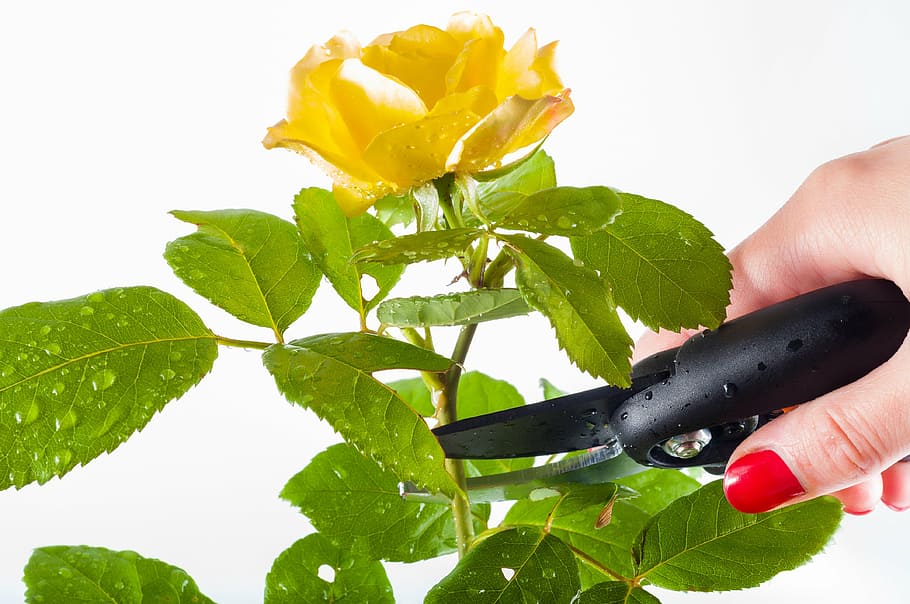
Take cuttings from a healthy, mature plant in the spring or summer. Cuttings should be 4 to 6 inches long, with a few leaves on the top. Plant the cutting in a pot and place it in a warm, bright location but not in direct sunlight.
3. Layering
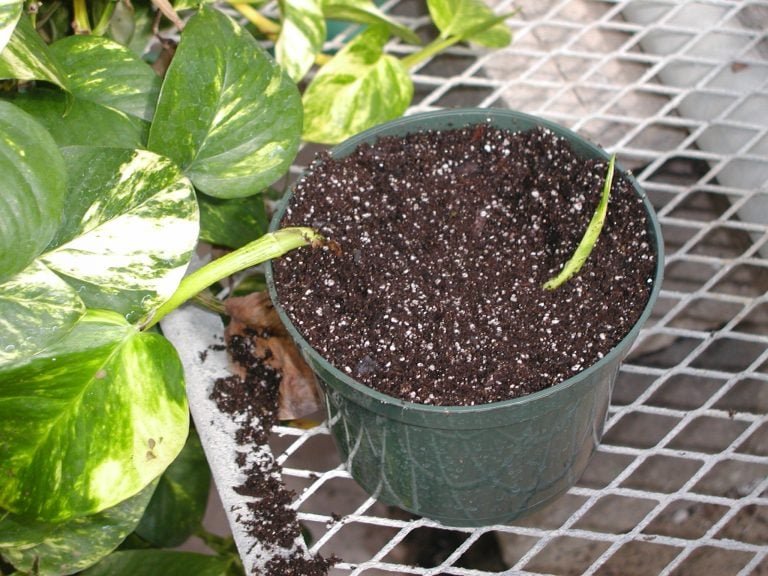
Layering means encouraging the plant to grow new roots from a stem while it’s still attached to the parent plant. Bend a branch of the Callistemon ‘Splendens’ down to the ground and bury the middle section of the branch in soil, leaving a tip and the base of the branch exposed.
Keep the soil moist, and new roots should develop from the buried section of the branch in a few months. Once the roots have developed, cut the branch from the parent plant and transplant the new plant to a new location.
No matter which method of propagation you choose, it’s essential to keep the soil moist, provide ample light but not direct sunlight, and keep the plant in a warm environment. With patience and care, you should be able to successfully propagate your Callistemon ‘Splendens.’
Importance of Regular Care for Callistemon ‘splendens’
Caring for plants is a rewarding experience that not only benefits the plant but also enhances our well-being. The act of nurturing a plant can be therapeutic and calming, providing a sense of satisfaction. By doing this, we are contributing to a healthier environment by reducing our carbon footprint and improving air quality.
Callistemon ‘Splendens’ is known for its striking crimson bottlebrush-like flowers. It requires regular care to thrive and produce vibrant flowers year after year. Regular care, such as pruning and fertilizing, promotes healthy growth of the plant. It also helps to prevent diseases that can affect the plant. Most importantly, it helps to extend the lifespan of the plant.
By following these simple care tips, you can help your Callistemon ‘Splendens’ thrive and produce beautiful, vibrant blooms year after year. Taking good care of Callistemon ‘Splendens’ will reward you with its beautiful, showy flowers and the wildlife it attracts. So, make sure to provide it with the care and attention it deserves.
Frequently Asked Questions (FAQs)
What Are the Best Growing Conditions for Callistemon?
The best-growing conditions for Callistemon are listed below.
- Sunlight for 6 hours a day.
- Temperature between 10℃ to 32 ℃.
- Moderate Watering
- Soil rich in sand, clay, and loam.
Is Bottlebrush Full Sun?
Bottlebrush typically prefers full sun exposure and can thrive in hot, dry conditions. While they can tolerate some shade, they will produce fewer flowers and may become leggy if grown in too much shade. It’s best to plant them in a location that receives at least 6 hours of direct sunlight per day.
Where Do Bottlebrush Trees Grow Best?
Bottlebrush trees are native to Australia and thrive in warm, sunny climates with well-drained soil. They are well-suited to regions with Mediterranean or subtropical climates. These trees are tolerant of drought but may require occasional watering during extended periods of dry weather. They can also be grown in containers and brought indoors in colder climates.
What Is the Lifespan of a Bottlebrush Tree?
The lifespan of a bottlebrush tree can vary depending on the species and growing conditions. On average, they can live for 20 to 40 years, but some have been known to live for over 50 years in ideal growing conditions.;
Is Bottle Brush an Indoor Plant?
While bottlebrush plants can be grown in containers, they are typically not well-suited to indoor growing conditions. Growing them indoors can be challenging, as they may not receive enough light. It’s best to grow them outdoors in a location that receives at least 6 hours of direct sunlight per day.
Is Epsom Salt Good for Bottle Brushes?
Epsom salt (magnesium sulfate) can be beneficial for bottlebrush plants, as it can provide them with a source of magnesium, an essential nutrient for plant growth. However, it’s important not to overuse Epsom salt, as too much can lead to soil pH imbalances and other nutrient deficiencies.
What Type of Soil Is Best for a Bottlebrush?
Bottlebrush plants prefer well-draining, sandy, or loamy soil with a slightly acidic to neutral pH. They can tolerate poor soil conditions and drought once established, but they will benefit from regular watering during dry spells and may need additional nutrients if the soil is nutrient-poor. Adding organic matter, such as compost, to the soil can improve its structure and fertility.
Is Bottlebrush Fragrant?
The flowers of bottlebrush plants are not typically fragrant. While they are known for their distinctive, bottlebrush-like shape and vibrant colours, they do not produce a strong scent like many other flowering plants. However, some cultivars may have a slight, pleasant fragrance that can be noticed up close.

